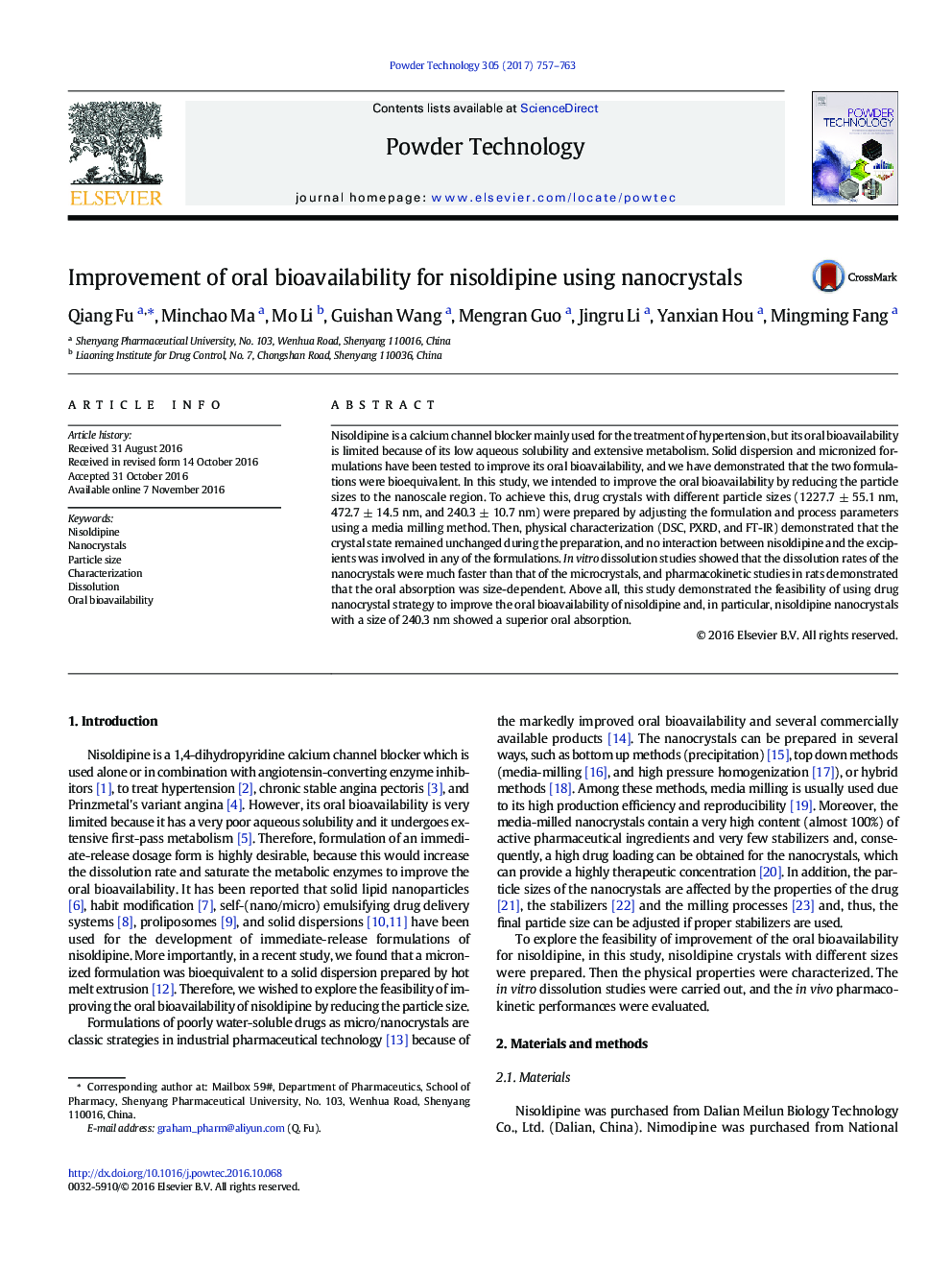| Article ID | Journal | Published Year | Pages | File Type |
|---|---|---|---|---|
| 4915357 | Powder Technology | 2017 | 7 Pages |
â¢Nisoldipine nanocrystals were firstly prepared using a media-milling method.â¢Different-sized crystals were prepared by adjusting formulation and processes.â¢The nanocrystals had much higher oral bioavailability than the solid dispersion.
Nisoldipine is a calcium channel blocker mainly used for the treatment of hypertension, but its oral bioavailability is limited because of its low aqueous solubility and extensive metabolism. Solid dispersion and micronized formulations have been tested to improve its oral bioavailability, and we have demonstrated that the two formulations were bioequivalent. In this study, we intended to improve the oral bioavailability by reducing the particle sizes to the nanoscale region. To achieve this, drug crystals with different particle sizes (1227.7 ± 55.1 nm, 472.7 ± 14.5 nm, and 240.3 ± 10.7 nm) were prepared by adjusting the formulation and process parameters using a media milling method. Then, physical characterization (DSC, PXRD, and FT-IR) demonstrated that the crystal state remained unchanged during the preparation, and no interaction between nisoldipine and the excipients was involved in any of the formulations. In vitro dissolution studies showed that the dissolution rates of the nanocrystals were much faster than that of the microcrystals, and pharmacokinetic studies in rats demonstrated that the oral absorption was size-dependent. Above all, this study demonstrated the feasibility of using drug nanocrystal strategy to improve the oral bioavailability of nisoldipine and, in particular, nisoldipine nanocrystals with a size of 240.3 nm showed a superior oral absorption.
Graphical abstractDownload high-res image (179KB)Download full-size image
